|
Any fool can have a logo and some advertising.
That’s not what it’s about. Your brand is about people. It’s how your people make the people walking through your door feel. And just last week, something related to that happened right here. That little nugget of brand thinking fell upon us like a ton of gold bricks. The Fabulous Honey Parker and I are working with one of the world’s biggest names in luxury hotel brands. They want a podcast. Yes, you read that correctly: a luxury hotel wants a podcast. This show, which I’ve nicknamed Hidden Hotel, is an internal product. In a big hotel operation, there are always lots of staff members who don’t know each other. This show is an effort to shine a light on the people who serve the brand, letting the staff members see each other taking pride in their work. In producing the pilot episodes, we sat down to record several employees. The staff member who is acting as the host said, “You’re going to love this next guy. He’s great.” She was wrong. He was beyond great. He came into the recording session and sat down at the table. He looks young. His LinkedIn profile suggests he might be in his late 20s. Beneath his beard, he’s fresh-faced and bright-eyed. Like all the employees, he wears a silver lapel pin bearing the hotel’s initials. We asked him, “What do you love about working here?” There was zero hesitation. “I love having high-expectation guests stay at the hotel. “I love people that come in, expecting to have the most perfect stay with us, to have everything that they've ever dreamed of in a vacation come true. I love making memories for people. “Whether it's as small as giving out a smores kit, to upgrading a room and making someone's honeymoon exceptional, I really love working for the [hotel’s] brand. “I take a lot of pride in working for the brand, knowing that it's one the leading luxury brands of hospitality in the world. “I think that it’s special, that it’s something to take seriously, and that wearing [the hotel’s initials] on your chest is something to really take pride in.” Wow. Dude. I was ready to follow this kid onto the frontlines of the luxury hotel business. And I say this as someone who has worked in high-ticket retail and never wants to work with the general public ever again. Never underestimate the branding power of having a staff member who’s a cheery, bright-eyed fanatic for your brand. It can change everything about the business. What’s that? You work alone? Well, guess who has to become that cheery, bright-eyed fanatic for your brand… Cheers, Blaine Parker Your Lean, Mean Creative Director in Park City LIGHTNING BRANDING ON AMAZON The Kindle edition of our new book is now available at Amazon for the bargain price of $19.95. For details about our new Lightning Branding courses, both do-it-yourself and we-do-it-with-you editions, click here. (There's even a video of us!)
0 Comments
Cashing In By Being Consistent And Bringing The Corn
"Bring The Corn, Sam" Is there an important marketing lesson in an old, black & white movie? It's a 70-year-old film that has been called "schlocky" and "mediocre." How can this film even matter? After all, one of the movie's screenwriters called it, "A great deal of corn, more corn than in the states of Kansas and Iowa combined." Remember, this man talking about his own writing. And what is corn, anyway? Ask Oxford, and here's what you get: "Trite, banal, or mawkishly sentimental." Ick. That Sounds Not Good But if you've ever watched this film, you know: the trite, banal and mawkish sentimentality works like a charm. This film is the Humphrey Bogart/Ingrid Bergman classic, Casablanca. It's one of the most popular movies of all time. Over 70 years later, it remains one of the single most rented movies ever. This despite being (yes) corny. Even the same people who describe it using words like "schlocky" and "mediocre" also say things like "phenomenon worthy of awe" and "Homeric." (Didn't study your classics? Homer is the Greek poet who gave us epics The Iliad and The Odyssey. He's considered a genius for all time.) Damn The Corn! Full Speed Ahead! The reason Casablanca has been working for the better part of a century is simple: big themes and authenticity. Yes, the movie is full of stereotypes. But the stereotypes are positive and flattering. The movies is rife with emotional struggle. Raw human emotions are at the center of everything. And the key theme of the film is this: Sacrifice. Almost nobody in the movie is without selfishness and greed. But when push comes to shove, everyone you care about sacrifices something. As the great Italian thinker and author Umberto Eco says of Casablanca, "The myth of sacrifice runs through the whole film." Ah, myth. Myths Are The Stories We Tell About Our Better Selves And Casablanca works because it is founded on a myth of things that are good, right and true. Despite bouts of bad acting, erratic storytelling, and ongoing corn, Casablanca is a 102-minute commercial for the myth of sacrifice above personal gain. It's a story about intrigue, betrayal, love, sex, hope--and our better selves. Corn sells in Casablanca, and it can sell in your advertising. Corny jokes, corny sentiment, even corny brands will work--IF they are honest and based on thoughtful, authentic brands. Corn is dad jokes. The comedy may not be skillful or even very funny. But it's delivered with heart. It comes with a knowing wink and a nod by a guy who's a good, authentic human. We've had long-running ad campaigns based on corn. Those corny campaigns have made the advertisers into celebrities. Authentic corn has made them top-of-mind. It has helped them make wheelbarrows full of money. So much advertising at the small-business level is corny. The corn that works does so because it's built on a solid foundation of authentic brand. It works also because it's consistent. It works because it brings the love that underpins the Dad joke. Loving your work. Loving your customer. Loving the pursuit of a better reality. Those things are not dictated by fashion or style. They are predicated on the best of us. And the best of us is a quality that is timeless. LIGHTNING BRANDING ON AMAZON The Kindle edition of our new book is now available at Amazon for the bargain price of $19.95. For details about our new Lightning Branding courses, both do-it-yourself and we-do-it-with-you editions, click here. (There's even a video of us!) Cheers, Blaine Parker Your Lean, Mean Creative Director in Park City Want Your Competition To Love You? Stop Advertising.
I've been having conversations with readers of this weekly screed. It's disappointing (and no surprise) to see a recurring theme. Business owners have stopped advertising. More than one media salesperson is bemoaning an "immediacy mentality over a marketing mindset." (Credit to Debra Carpenter at Michigan's Joy 99 for that gem.) The familiar refrain: Business owners can't understand why they should advertise. Business is slow, inventory is scarce, people are staying home, things are locked down--name an excuse. History keeps showing us the power of advertising when things are bad. It's the power of thriving versus dying. Authoritative sources are always showing that benefits of advertising in a downturn. "But my budget! I have no revenue!" And without advertising, where is more revenue going to come from? We have a friend who owns a remodeling business. When the 2008 recession hit, he was leveraged to the teeth. He also knew: stop advertising, and he would never recover. So he was resourceful. He kept finding creative ways to keep the marketing tap open and flowing. His main competitor did not. Our friend's business is now huge. It's a juggernaut. His competitor never recovered. Freight train, a supertanker, or marathon runner? Pick your marketing metaphor. It's about momentum and the long haul. When your business stops advertising, your customers forget you. Advertising is about keeping your brand in motion. Keeping it rolling. Keeping it afloat. Keeping it running. Stop the momentum, and getting back to speed is difficult. "But what if I can't afford to do it?" Better question: Can you afford not to? The overused word of our time is "pivot." Everyone's pivoting like ballerinas on meth. Yay, pivoting! Despite the overuse of the word, pivoting is about survival, from the macro to the micro, from the economy to the solopreneur. Pivot. Swivel. Revolve. Spin. Swing. Whatever your metaphorical verb, find a way do it. Work on a way to keep advertising. "I can't afford it!" is reactive thinking. "How can I afford it?" is proactive wisdom. And understand how to be effective. Being effective means being evocative. Your brand is the fuel that informs the emotion of your message. If you don't understand your brand, it's time to change that. For proof of the power of advertising in a downturn, don't take my word. Google "advertising in a recession." The first hit should be a great article from Harvard Business Review. https://hbr.org/2009/04/how-to-market-in-a-downturn-2 After that comes a parade of intel on doing the smart thing. Keep running your marathon, do it with wisdom, and you will beat the runners who quit. LIGHTNING BRANDING ON AMAZON The Kindle edition of our new book is now available at Amazon for the bargain price of $19.95. For details about our new Lightning Branding courses, both do-it-yourself and we-do-it-with-you editions, click here. (There's even a video of us!) Cheers, Blaine Parker Your Lean, Mean Creative Director in Park City Your founder creates a brand name that contains the letter "L" many times.
Why? So, to a Japanese buyer, it sounds western. (If you are unaware, the Japanese have difficulty pronouncing the letter "L.") A decade after selling your first pair of pants, your IPO raises almost $328 million. For three years in a row, your brand ends up on a majorpublication's list of fastest growing companies. You become known for using "holistic guerrilla marketing." You want your customer to feel that they are part of a larger community. But then come the controversies. One line of clothing made from seaweed provides "anti-inflammatory, antibacterial, hydrating and detoxifying benefits." But independent lab tests disprove that claim. You have to stop claiming it. Next, customers are complaining of poor quality. Products are falling apart after just a few uses. Oops. Some of your reusable bags are recalled for containing high amounts of lead Then, everyone's favorite media laugh-fest. Turns out, a very expensive pair of pants is too thin. They become transparent. You recall 17% of your entire inventory. Major cost. Bad press. The Chief Product Officer resigns. Then, your founder mocks how Japanese customers pronounce the brand name. (Remember all those instances of the letter "L"? What's he thinking?) The founder is asked why there are no clothes for plus-size women. He says it's because they're too expensive to make. Customers complain about fabric pilling. The founder blames it on women wearing it wrong. And on having body shapes inconsistent with the clothing design. He says some women's bodies are inconsistent with the brand's clothing. When the founder is forced to resign, some folks are unsurprised. Later, the founder publishes an open letter to shareholders. He says the company is losing ground to competitors. The founder launches a website specifically to criticize the company, which has lost its way. (Based on what got him fired, I'm wondering: what was the company's way in the first place?) And now, the latest media giggle... "Resist Capitalism." The brand is being ridiculed for using that phrase. That idea is one component of a "Decolonizing Gender" yoga workshop it promoted. And that is how the firestorm of scorn and mockery comes raining down upon the brand. It happened last week. The brand is a lightning rod. The media delights in whipping it. But what is the truth? The truth is that the brand did not create the event. A brand ambassador created it. But the company shared it on their social media feeds. It seems nobody in charge of social had the good sense to question the message vis à vis the brand. Hello, communication overload! In this over-fast, overcommunicated culture, many in charge of communicating are overwhelmed or underqualified. Or both. Neither you nor I will ever have an international, multi-billion-dollar brand. (Nothing personal.) Nonetheless, the small-business brands we do have are still judged by how they make people feel. Our customers pay attention. How do our brands behave? How are our customers speaking of us? The good news: at least this ridiculed brand is being talked about. And as that gender-challenged gentleman from The Old Country once said, "There's only one thing worse in the world than being talked about, and that's not being talked about." Yes, we have to be judicious about what we say and how we behave. But we still have to do things that are worth talking about. We each have to make our customer feel something. We just have to hope we are being on-brand. And not looking like idiots. Got courage? LAST CHANCE FOR FREE... It's going away soon, because it is now on amazon Kindle for $19.95. Get the last remaining free copy of Lightning Branding: How to Generate Revenue Faster With An Electrifying New Brand right here. For details about our new Lightning Branding courses, both do-it-yourself and we-do-it-with-you editions, click here. (There's even a video of us!) Cheers, Blaine Parker Your Lean, Mean Creative Director in Park City “What?! Of course not! You’re out of your brand-loving mind! Go back to beneath whatever godforsaken marketing rock you crawled out from under!” OK. I’m out of my mind. In some minds, “subversive” might conjure an image of a Molotov-cocktail throwing revolutionary who meets his swarthy, mustachioed cohorts in dark basement cafés to plot revolution against the ruling party while smoking a thick, harsh, unfiltered cigarette with a hard-to-pronounce name like “Gauloises.” And yes, that is a kind of subversive. But let’s look at the core definition of the word. “Subversion” is about taking power from an established authority or institution. That definition does not hinge on being able to meet in a smoky, dark basement or heaving a bottle of petrol stuffed with a flaming rag. The important component is taking power. And not necessarily absolute power. Some power is sufficient. And it’s arguable that branding is a form of subversion when the goal is to win customers from the competition. Taking away customers is a form of winning power. One of our first clients was a general dentist who said, “We want to run some ads for implants!” We said, “You could do that. But you’re competing against a branded national giant called Clear Choice. How about developing a brand that’s in direct competition?” The resulting brand gave the dentist a clear and evocative profile as an implant specialist. In the first year, that brand took in close to a million bucks. Could that near-million bucks have gone to Clear Choice? Of course. But our client took that chunk of power. Subversive dentistry, at your service! What about the sound of power down the drain? Back in my radio days, we helped a plumber do some backward branding. The account rep and I reverse engineered branded advertising for the plumber. It took that local plumber to #2 in the market for top-of-mind awareness. You can argue that this small-business brand was taking power from #1 plumber, an outfit called Roto-Rooter. Subversive branding is helpful for small-business survival. The small-business brand need take only a tiny fraction of the customer power that would go to the 600-pound gorilla. How many stories have you heard about communities rallying against a proposed big-box chain store? The big national brand wants to come to town and subvert power from established local business. More than one Walmart has drained the power and authority from a nearby main-street commercial district. The Home Depot brand has put more than one local hardware store out of business. “You can do it, we can help!” That’s a (now defunct) Home Depot tagline. It also has some grim meaning when couched against the act of ruining local businesses. Local bookstores were crushed by subversives called Waldenbooks, Barnes & Noble and Borders. Later on, those three subversive giants were a subversive outfit called Amazon. A big national brand can subvert an authoritative local business. Then, fans of local businesses cry, “That’s not fair!” But on a clinical level, commerce is not about fairness. It’s about exchanging goods and services. If a small business wants to exchange goods and services against a giant competitor, isn’t it necessary to take away even a modicum of power? Small businesses need and deserve brand. Be David. Take the power from Goliath and thrive. Cheers, Blaine Parker Your Lean, Mean Creative Director in Park City Our Lightning Branding clients almost always surprise us... Just this morning, I was reading the worksheets from a Lightning Branding Private Edition client. This is a smart woman. And in a way, she's a personification of the American dream: first-generation American child of immigrant parents, a law degree, big jobs with big companies, now working as an independent consultant in financial technology. On her worksheet was an exercise saying to think of three attractive brands that make you want to participate. Describe the brand's commitment to sharing their joy. How does it draw you in and make you want to be part of the club? We never saw this answer coming... "Burning Man." Yes, this woman's first favorite attractive brand is a desert event renowned as an experiment in community and art. It is recognized for its "Radical Inclusion." In simple terms, she described profound emotions. It's clear that being at Burning Man was a revelation. It's also not the first time we've heard this kind of thing. A few years ago, The Fabulous Honey Parker and I were at the dinner table with a real estate developer. He's originally from the Midwest. He's a hockey goalie, a jet pilot, a game hunter, and very much a red-state kinda guy. He was also speaking in glowing terms about his experience at Burning Man. We've known this man for years. But that night at dinner, we saw a new side of him. Someone had pulled back the curtain and offered a glimpse of the Promised Land. He'd been hit by a lightning bolt. It left him joyful, humbled and awed. This hockey-playing sophisticate who votes red now feels the fire. From the outside, Burning Man looks like a hippy festival of high-weirdness fueled by drugs and debauchery. In other words, it's exactly where you'd go to find a guy like Republican activist Grover Norquist, right? Yes, Mr. Norquist went to Burning Man in 2014. Writing about the experience, he describes a sense of community and camaraderie befitting a "church social." He observed that the desert's demands for self reliance make everyone tough. He also noted, "There are few fools, and no malingerers. People give of themselves." Giving of themselves? This is an important lesson for any business and its brand. Through Lightning Branding, we've worked with people who are smart, thoughtful, giving and funny. They are small-business entrepreneurs who are driven to be useful. In the process, they want to provide an experience that makes their client feel good. You might even say that deep inside, they feel the fire. Burning men. Burning women. Burning brands. Built on purpose, on intent, on usefulness. Welcome to the fire within... Still FREE for now... There's a free copy of Lightning Branding: How to Generate Revenue Faster With An Electrifying New Brand right here. For details about our new Lightning Branding courses, both do-it-yourself and we-do-it-with-you editions, click here. (There's even a video of us!) Cheers, Blaine Parker Your Lean, Mean Creative Director in Park City Let's rename item-and-price advertising for what it is, shall we? I admit it. I'm still losing sleep over item and price advertising. We need to rename it. Let's call it "piece-and-price." A piece of merchandise is an item, right? And "piece and price" lets us use the acronym PAP. Yay! Acronyms! PAP advertising! And "PAP" is fitting, eh? As you may know, the word "pap" has two definitions. 1) "Bland soft or semiliquid food such as that suitable for babies or invalids." 2) "Reading matter that is worthless or lacking in substance." Synonyms for "pap" include "nonsense," "drivel," "rubbish," "trash," and "noise." The latter is my favorite. "Noise" is a direct reference to communication science. Noise stands between the sender of a message and the receiver. In our case, noise is a barrier between advertiser and customer. And PAP advertising is just noise. Look at so many car dealers and appliance stores. "Picture! Price! Buy now!" Zero effort to engender a good feeling about their business. Back when I was in radio, my most successful car dealer advertiser sold out their inventory every month. They did it by advertising one thing: Brand. Every message compelled you to feel good about their dealership. They made you want to buy a car because it made them sound like people you want to be friends with. Contrast that with the unbranded competition: "Yeah, we sell that, too. Buy it now!" But...being king is different. Can you be the king of the PAP you advertise? Remember when big-screen TVs were unusual and expensive? Every day, lots of PAP advertisers were showing you big TVs and big prices in their race to the bottom. But not The King. In California, a famous retailer called himself "The King of Big Screen TVs." He had PAP advertising. Big TVs! Low prices! However... The King also showed you his face. He told you his name. He promised same-day delivery and 100% happiness. He said the customer is always right. He also promised, in every ad, "I AM the king of big screens!" He had a brand and he advertised it. One can argue: it is an imperfect brand. But it IS a brand. It is not just PAP. And for 30 years, he built a reputation as the leader in big-screen TV sales. At his peak, he was selling $30 million in big TVs-out of a single retail store. Yes, TVs. One store. 30 million bucks a year. When he died in 2015, he was famous. Big newspapers and magazines wrote stories about him. He remains a celebrity even today. His brand outlasted his business. People loved him. Nobody loves PAP. Unbranded PAP is racing to the bottom of the barrel. Human beings are irrational, emotional creatures. They make decisions using emotion. This is not my opinion. This is Nobel-prize winning science. Winning people over requires appealing to their emotions over the long term. Your business must feel right. Making it so requires brand. What if you are afraid of paying too much for a big TV? Who would you trust? a) The generic appliance retailer, no branded personality, displaying pictures and prices (PAP!) of washing machines, refrigerators, ranges and, oh, big TVs? Or... b) The guy who spends 30 years displaying pictures of big TVs at low prices while saying "I'm the king of big TV and you're the boss!" It's not high art. It doesn't need to be. It needs to be authentic, resonant and consistent. It needs to feel good. It needs to be something besides PAP. Know someone who needs to electrify their branding for business as unusual? There's still a free copy of Lightning Branding: How to Generate Revenue Faster With An Electrifying New Brand is still available by clicking here. For details about our new Lightning Branding courses, both do-it-yourself and we-do-it-with-you editions, click here. (There's even a video of us!) Cheers, Blaine Parker Your Lean, Mean Creative Director in Park City It's a challenge and it's troubling.
Last week, we were asked about an advertiser who insists item and price advertising is king. "Branding is a waste of money." How could this man be persuaded otherwise? I don't know that he can. Maybe if he's presented with the right question. This advertiser lives in a world filled with brand advertising. He sees it and hears it. It's done by businesses bigger and more successful than his. Yet he is 100% certain that he is doing it right and those businesses are doing it wrong. So he spends his own money saying, "Here's my item and here's my price, buy now!" I used to work for a guy who insisted item and price advertising was king. One day, he bought a direct-mail marketing package that couldn't survive on item and price advertising. So I became his copywriter. For a year, I wrote brand-based marketing copy that was fun, engaging, informative, and effective. Every time a marketing piece went out to the mailing list, there was a corresponding bump in sales. It was right there, on the page, in hard numbers. We could prove these brand-building advertisements were effective--yet he canceled all of it. He refused to acknowledge a correlation. Yes, he had a bump in sales each time. But the mailing contained no item and price advertising. Individual sales could not be directly attributed to the mailing. Therefore, the advertising was a failure. "Yes, I have my desired result--but it defies what I know to be true. Therefore, the evidence is wrong." People do not crave items and prices. They crave relationships. It's simple psychology. Relationships make us feel important. Strong branding builds a relationship. Item and price advertising is an instruction to buy now. It does not make the customer feel important or appreciated. It reduces the relationship to a transaction. "Give me the money. Thank you and goodbye." The right branding makes the right customer feel important. Here are two examples. For 35 years, Motel 6 has been crushing it by making the budget lodging customer feel important. "We'll leave the light on for you." That says, "Hey, you are important to us." Their brand advertising follows suit. And oh, by the way...Motel 6 also has a unique selling proposition: "The lowest priced room of any national chain." There's your item and your price. No, there is no number. That's because those numbers change all the time. Why do you think they put the price on a lighted sign outside the motel that can be changed all the time? Ritz-Carlton branding is also making the luxury lodging customer feel important. Their motto is "We are Ladies and Gentlemen serving Ladies and Gentlemen." Customer service is part of their branding. Their branding tagline is, "Let us stay with you." Their website says, "The Ritz-Carlton stands ready to create unforgettable moments from some of the world's most treasured destinations. Every day, every guest, is our chance to create a lasting memory. What will you remember?" Ritz-Carlton and Motel 6 each you ownership of the experience. But Ritz-Carlton doesn't need item and price advertising. You already know the price is very, very high. That price is part of their branding. Along with all the luxurious images in their brand advertising, you know you're going to feel important. Motel 6 or Ritz-Carlton: branding is not a waste of money for either one. It is an investment in their future sales for a core customer who is not ready to "buy now." COVID has branding, too: that of a beast devouring the economy. Everyone is talking about pivoting their business. But is anyone talking about having better branding? Better branding builds a relationship. Better branding makes the customer feel good about your business. Better branding makes the customer want to work with you tomorrow. "Buy now" is a lowest-common-denominator tactic for right now. "You are important to me" is a strategy for a lifetime. And the businesses who come out on top tomorrow will have done it using better branding. But, will the item and prices advertisers survive? Know someone who needs to electrify their branding for business as unusual? There's still a free copy of Lightning Branding: How to Generate Revenue Faster With An Electrifying New Brand is still available by clicking here. For details about our new Lightning Branding courses, both do-it-yourself and we-do-it-with-you editions, click here. (There's even a video of us!) Cheers, Blaine Parker Your Lean, Mean Creative Director in Park City Go ahead. Try. It's not easy to make me laugh at your funny advertising. I might laugh. Or smile, just to be polite. But what you should expect is me a) looking at the ad (or listening to it), then b) trying to figure out where it went wrong. Or how it could be better. Or how the sales pitch failed. Or why there's no organic link between the laughs and the product. Or why the ad is even trying to be funny. This might come from a lifetime of fixing the work of others. Between years of screenwriting and standup comedy and over two decades of writing advertising, I've fixed a lot of jokes. But once in a while, I see a funny advertisement that makes me say, "I wish I'd written that." And then, sometimes, an ad is so good, I'm just happy that it even exists. This is one of those times. How to have laughs in your COVID-era advertising Sure, the first reaction is: why would I make people laugh at COVID advertising? To that, my answer is: Why not? If it's appropriate, have some fun. People need a laugh right now. But an ad I saw last week is still giving me a giggle. It continues to tickle. (If you were among the 500 or so folks who sat in on the Local Broadcast Sales webinar this week, you've heard me talk about this and may even have seen it. If so, I acknowledge the redundancy.) Here is that commercial in all its glory... Yes, I'm a sucker for mock pomposity.
I enjoy comedy that make fun of self-important, cause-oriented messages. Maybe this is one of those times. And maybe it feels so good because it is funny, it pretends to be self-important, and then it does actually support a good cause. All this to say: Yes, you can have fun, get a laugh, and be on-brand. This is one of those times where I want to salute the writer who did something ridiculous. "Stay home of the Whopper" is a simple and fun twist on the legacy brand. And "couch potatriot"? That is phrase is genius in its stupidity. This is so much better than the moldy Whopper of many months ago. What were they thinking? It doesn't matter how beautiful the photography is. It doesn't matter what point they were trying to make. The human animal is hardwired to be repelled by moldy food. That message doesn't make you feel good. This couch potatriot message, however? It doesn't even show the food. It just shows the silliness of the situation and invites you to play. And in "these uncertain times" of stoopid, hackneyed phrases and maudlin sentiment, evoking a good feeling and encouraging play are valuable things to give your customer. Not yet downloaded your free copy of Lightning Branding: How to Generate Revenue Faster With An Electrifying New Brand, there's still time. Just visit http://www.lightningbrandingbook.com. For information about our new Lightning Branding courses, both do-it-yourself and we-do-it-with-you editions, click here. (There's even a video of us!) Cheers, Blaine Parker Your Lean, Mean Creative Director in Park City I
At our house, we watch some delightfully dumb TV shows. Among them is Beat Bobby Flay. This is another silly competition show on The Food Network that doesn't make a lot of sense. No doubt, it's profitable. Just 25 seasons and counting. It's maybe not as profitable as Worst Cooks In America. We're talking 20 seasons of a show that could be called Shameless Kitchen Idiots Bang Spatulas On Their Heads And Cry. But we don't watch that. For some inexplicable reason, we enjoy watching Bobby Flay get thrashed. What's that? You don't know this icon of "unscripted" food-TV goodness? Here's how it works: for 20 minutes, two frenzied challenger chefs conduct a kitchen haboob against each other using an ingredient chosen by Bobby. The winner of that first round gets to face off against Bobby in round two. In that round, Bobby and the challenger have 45 minutes to cook a challenger-specified "signature dish." Three professional judges (who are clearly not smart enough to figure out which dish came from one of the most famous chefs in America) choose the winner in a blind taste test. All throughout, there's trash talking against Bobby. Benign hilarity ensues. Bobby's got a 62.5% winning record. There's almost 100% universal desire to see Bobby get spanked on national basic cable television. Whee! Anyway, here's where the marketing fun comes in... In a recent new-to-us rerun of this guilty pleasure, Bobby had to face-off against a chef who challenged him to make cacio e pepe. Whassat? You no know how to say? Pronounce it like "catch-eeo ay pay-pay" and you're close enough. It's a traditional Roman dish of spaghetti, pecorino Romano cheese and black pepper. It was once a staple food of Italian shepherds because it's practical and easy. The ingredients keep well for a long time. Besides being stupidly simple to make, it offers the bonus of being really tasty. You can use it to impress a first date with your kitchen prowess. (Just keep your time amongst the sheep out of the story.) It was clear: this challenger was ready to crush Bobby with her signature dish. She was cocky in announcing the cacio e pepe challenge. During the bout, she was over in her station making fresh pasta. She was making a special parmigiano-Reggiano stock for cooking the pasta. She was making special parmesan cheese toast crisps to go with. What was Bobby doing over in his station with his 45 minutes? Making a traditional cacio e pepe with dried spaghetti. Three basic ingredients. It doesn't take 45 minutes to make. So he did something interesting: he made the dish twice. The first time was a test run to make sure his dish was sound and competitive. The second time was his dish for the judges. Fresh, fresh, fresh means win, win, win! Right? The clever version of the dish had all kinds of problems for the judges-not the least of which was: it doesn't taste traditional. And the fancy stock made for cooking the fresh pasta? It made the fresh pasta gloppy. The parmesan toast crisps, well...did the Italian shepherds make those, too? But Bobby's simple, pedestrian edition of a favorite staple food was admired by the judges. Bottom line: the chef who didn't get clever and ran a test run of his dish crushed it. So, are your advertising dishes getting too clever? Or are they sticking to a proven model? Are you doing test runs against the proven dishes? Maybe most important, are they accused of being too clever? Are you just not listening to that feedback and testing it anyway? I've done that. Sometimes, the ad you'd thought would work simply doesn't. And sometimes, the ostensibly too-clever ad outperforms the proven dishes by 4:1. Bottom line: there are good ideas, and ideas that aren't as good. And occasionally, there are going to be ideas that crush it by a factor of four to one. Sometimes, you don't know you've made a gloppy, over-fancy cacio e pepe. And once in a while, you'll know you've made a classic. But only the judges will confirm it when they vote with their dollars. Let them judge. Now, about that free book and a few other things... The Fabulous Honey Parker and I have a new book called, Lightning Branding: How To Generate Revenue Faster With An Electrified New Brand. It's yours free by clicking here. For information about our new Lightning Branding courses, both do-it-yourself and we-do-it-with-you editions, click here. Cheers, Blaine Parker Your Lean, Mean Creative Director in Park City |
AuthorBlaine Parker is prone to ranting about any and all things related to brand. In many ways, he is a professional curmudgeon. While there is no known vaccine for this, the condition is also not contagious. Unless you choose it to be so. Archives
February 2022
Categories
All
|
|
© Copyright 2020 Slow Burn Marketing LLC |
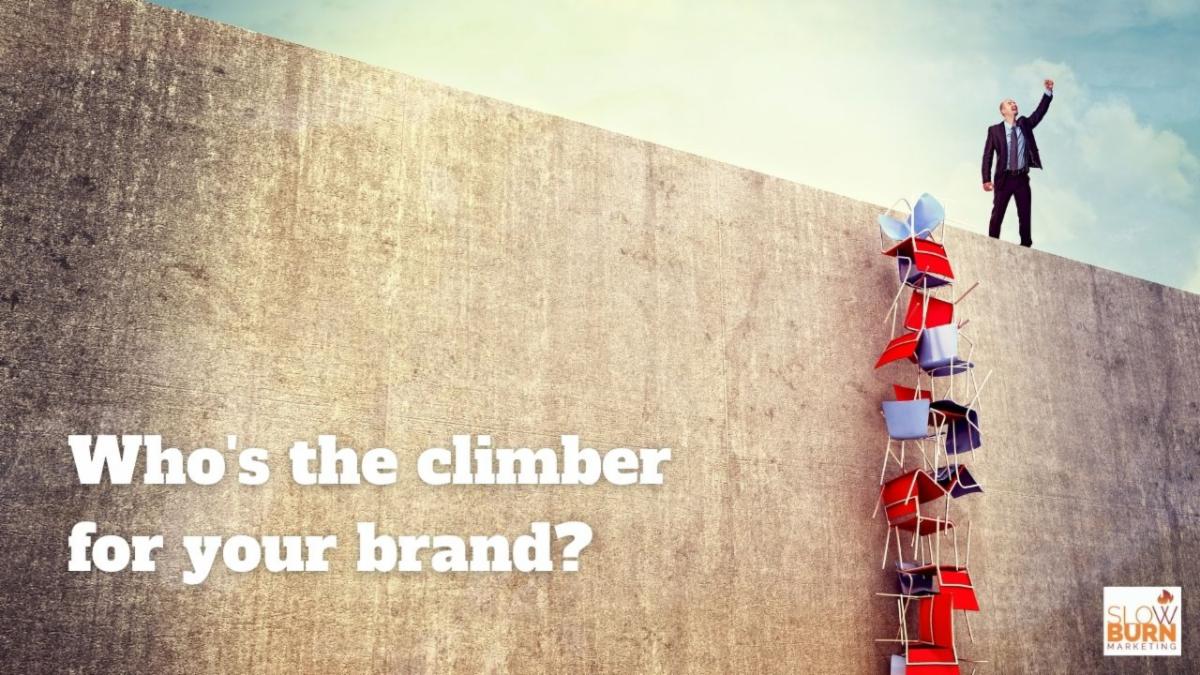
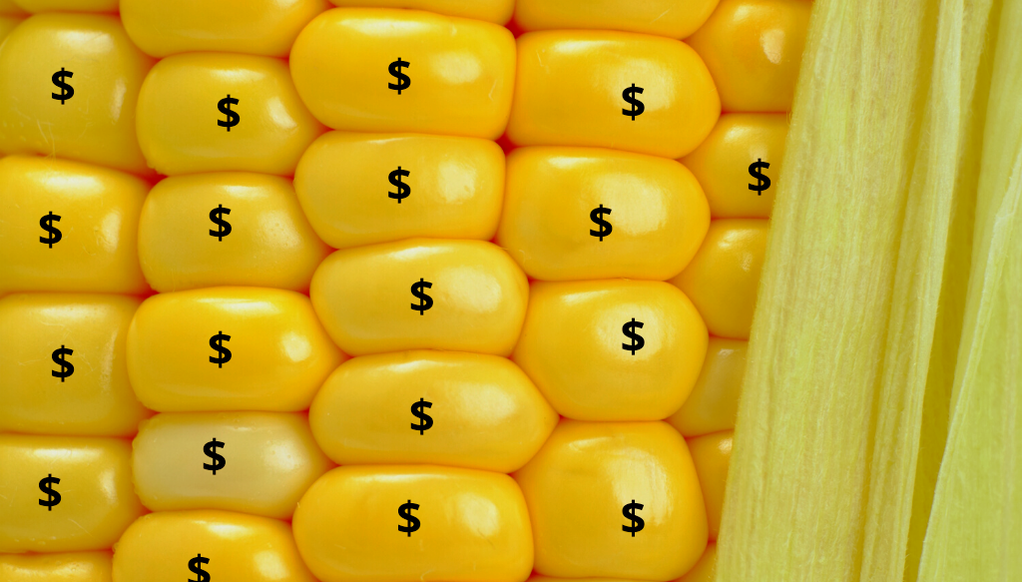
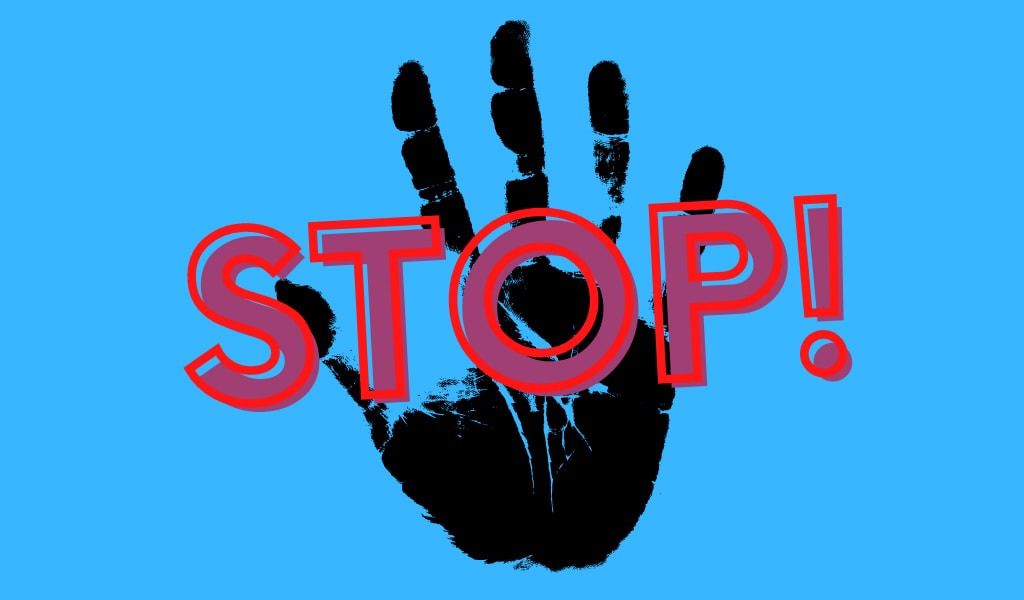
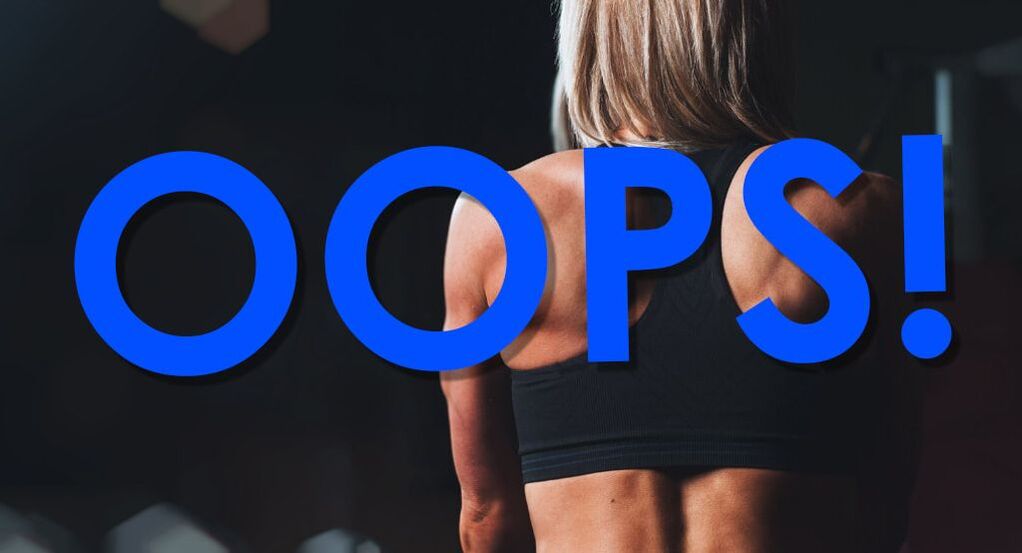
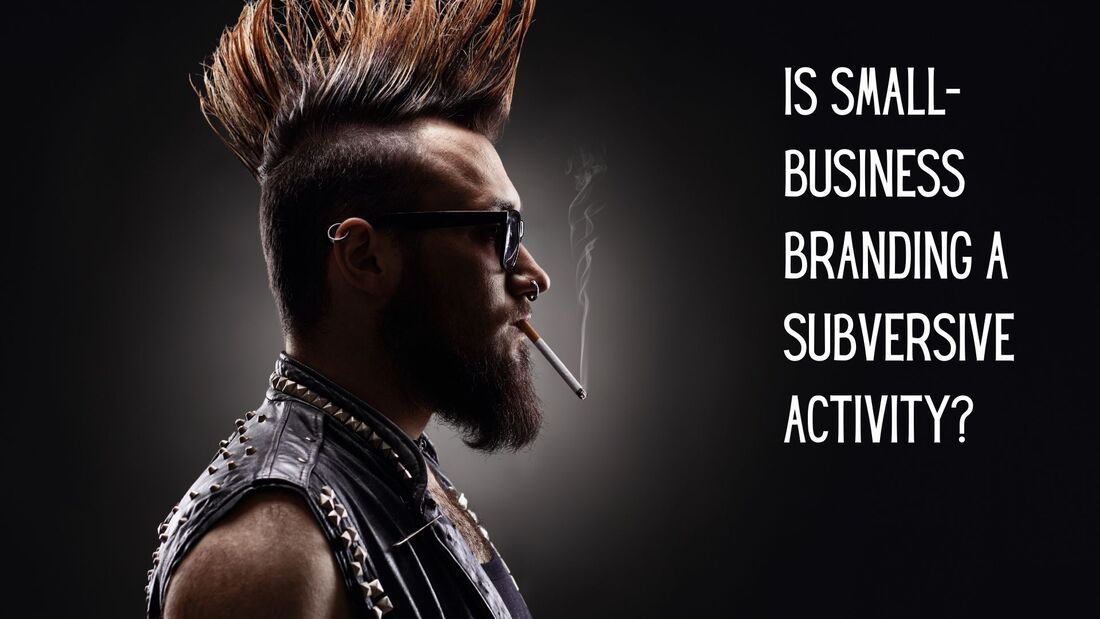
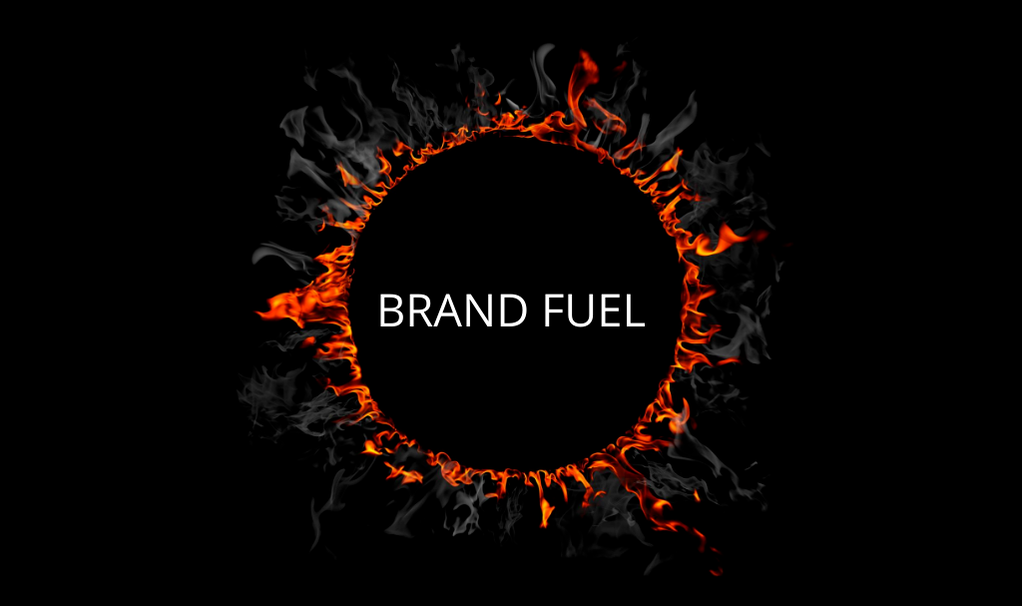
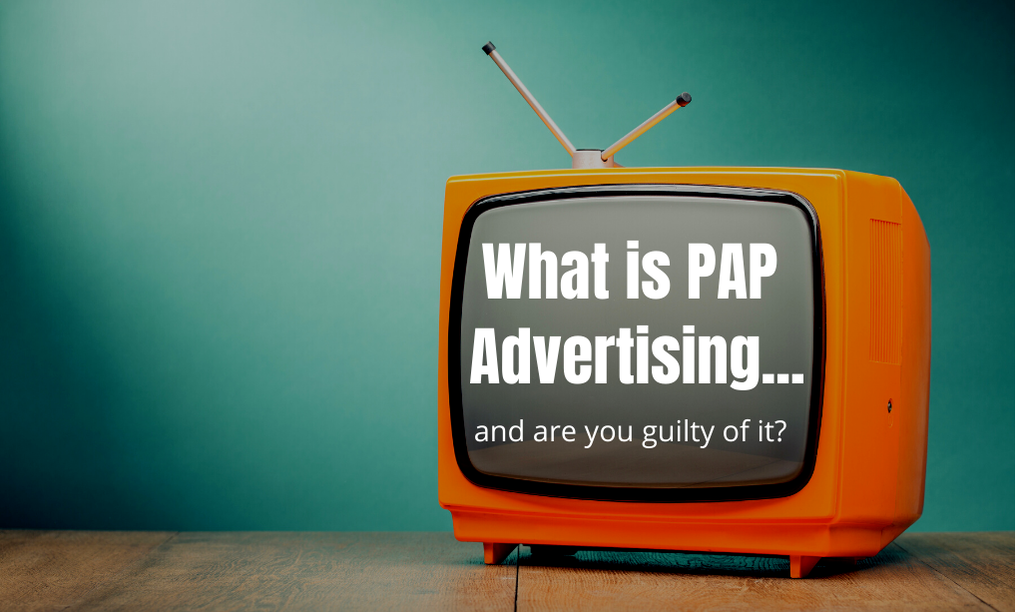
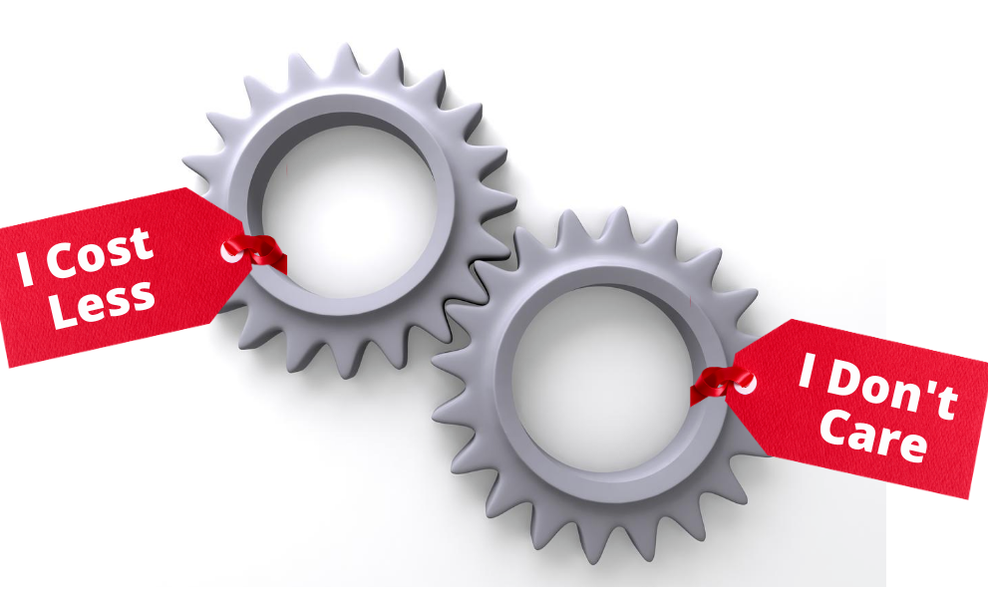
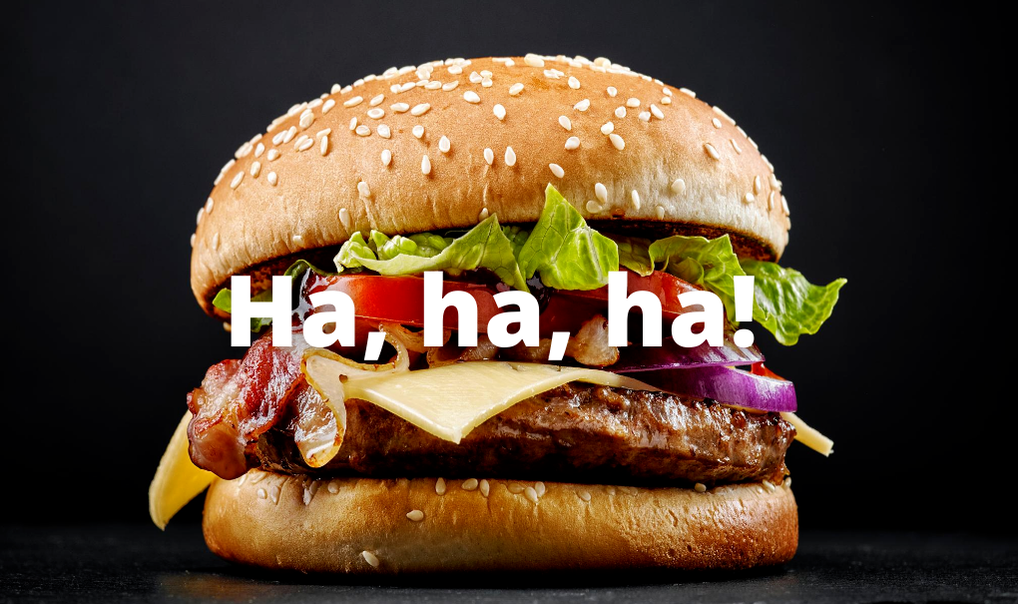
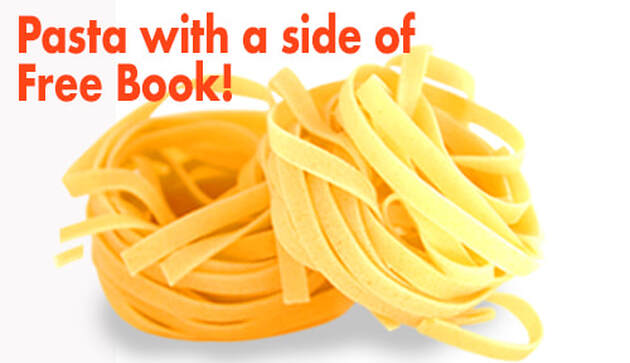
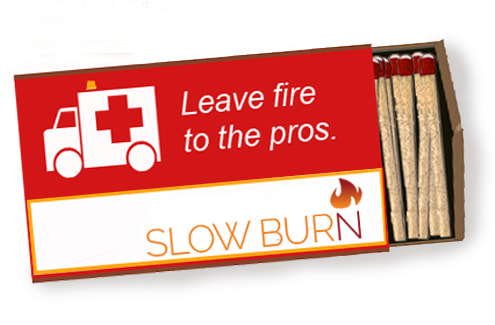
 RSS Feed
RSS Feed

